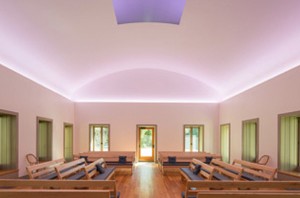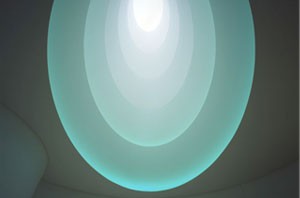Tag: James Turrell
-

Seeing Turrell’s Skyspace
My friend and I arrived at James Turrell’s Skyspace, at Philadelphia’s Chestnut Hill Friends Meetinghouse, just before sundown. When I asked another visitor if we could take photos, the man—who had visited a number of times before—told us the artist had asked that no one take pictures, so that we could keep the…
-

James Turrell and sacred architecture
James Turrell’s installations at the Guggenheim left me in an altered state. Using light as his primary medium, Turrell’s art requires slow looking and an active acceptance of ambiguity—both conducive to entering a kind of contemplative trance. He’s pursued his singular work, from early experiments with slide projectors in dark rooms…
